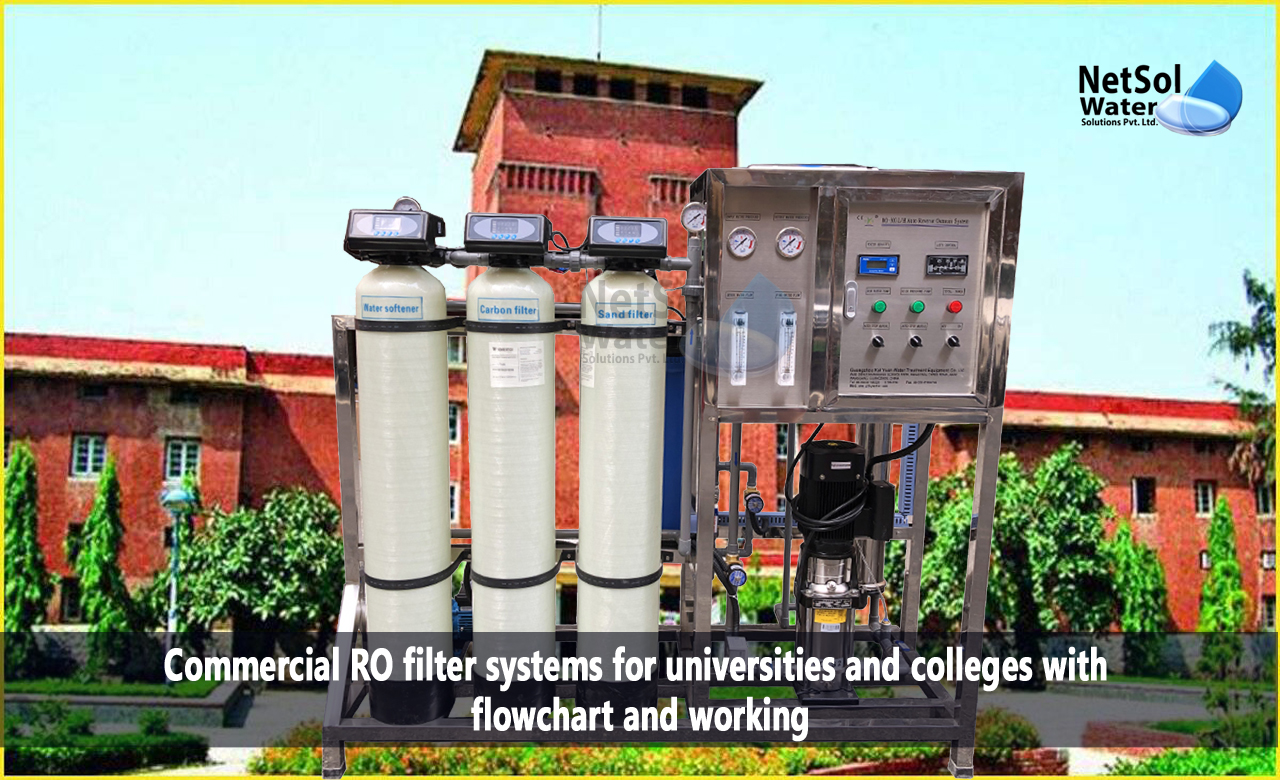What are commercial RO filters?
Commercial RO (Reverse Osmosis) filters are water filtration systems that use a semipermeable membrane to remove impurities and contaminants from water. They are designed for use in commercial and industrial settings, such as restaurants, hotels, hospitals, universities, and manufacturing facilities, where large quantities of purified water are required.
The RO filter system consists of several components, including pre-treatment filters, RO membranes, pressure vessels, pumps, and a control panel. The pre-treatment filters remove large particles, debris, and organic matter from the water, while the RO membrane acts as a barrier, allowing only pure water molecules to pass through. The impurities and contaminants are left behind and are discharged as reject water.
Commercial RO filters are capable of removing a wide range of contaminants, such as dissolved solids, minerals, bacteria, viruses, chemicals, and heavy metals, from the water. They produce high-quality water that is safe for consumption, cooking, and other applications.
Regular maintenance and replacement of the filter cartridges and membranes are essential to ensure that the RO filter system operates at peak efficiency and maintains the required quality standards. Commercial RO filters are available in various sizes and capacities, depending on the specific requirements of the application.
Commercial RO filter systems for universities and colleges
Commercial RO (Reverse Osmosis) filter systems are commonly used in universities and colleges to provide clean and safe drinking water to students, faculty, and staff. These systems are designed to remove impurities and contaminants, such as minerals, bacteria, viruses, and chemicals, from the tap water, making it safe for consumption. Here is a flowchart that outlines the working of commercial RO filter systems in universities and colleges:

1. Raw Water Source: The first step is to identify the raw water source, which can be either surface water or groundwater.
2. Pre-Treatment: The raw water undergoes pre-treatment to remove large particles, debris, and organic matter. This can be achieved through various methods such as sedimentation, filtration, and activated carbon adsorption.
3. RO Filter System: The pre-treated water then enters the commercial RO filter system. The RO filter system consists of several components, including the sediment filter, activated carbon filter, RO membrane, pressure vessel, pumps, and control panel.
4. Sediment Filter: The sediment filter removes any remaining sediment, rust, or sand particles from the water.
5. Activated Carbon Filter: The activated carbon filter removes chlorine, odors, and organic matter from the water, improving its taste and odor.
6. Reverse Osmosis: The water is forced through the RO membrane, which acts as a barrier, allowing only pure water molecules to pass through. The impurities and contaminants are left behind and are discharged as reject water.
7. Post-Treatment: The purified water then undergoes post-treatment, which involves the addition of minerals such as calcium and magnesium to improve the taste and balance the pH of the water.
8. Storage: The purified water is then stored in a tank, which is typically made of food-grade plastic or stainless steel, to maintain its purity and prevent contamination.
9. Distribution: The purified water is distributed to various points of use within the university or college campus, such as water coolers, dispensers, and drinking fountains.
10. Quality Control: The purified water is subject to regular quality control testing, which involves various parameters such as pH, total dissolved solids, and bacterial count, to ensure that it meets the required quality standards.
11. Maintenance: Regular maintenance of the RO filter system is essential to ensure that it operates at peak efficiency and maintains the required quality standards.
Conclusion:
In conclusion, the use of commercial RO filter systems in universities and colleges is critical to ensure that students, faculty, and staff have access to safe and clean drinking water. The above flowchart outlines the various steps involved in the working of commercial RO filter systems in universities and colleges.
Do you need an advice or assistance on selecting the best water and waste water treatment unit? We have solutions for all your problems!
Let us now your problem, our experts will make sure that it goes away.
For an assistance or related query,
Call on +91-965-060-8473
Or write us at enquiry@netsolwater.com



